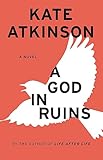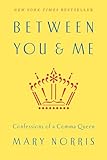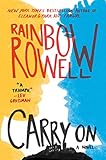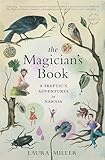Winter
My friends ask me if I am happy to be back in New York City. I am not.
My U.K. visa expires in January, but I fly home a week before Christmas, frustrated and anxious about rebuilding a life in New York. In the new year I take a short-term sublet a few blocks from a Superfund site in northeast Brooklyn, across from a tow impound lot and next to an enormous industrial complex. I can’t figure out which industry exactly. I spend much of the month working from the apartment, which belongs to a puppet artist, hunkering down because when it’s not snowing, it’s staggeringly cold, the temperature hovering somewhere near zero. I watch snow pile up on the rusted-out old cars that line the edge of the industrial lot; I count a dozen cats, maybe more, slipping in and out between the tires. I am trapped, physically and metaphorically.

 At some point the year prior, I’d struck up an online friendship with the writer Katie Coyle. It began with little mutual hearts across the Internet; soon it was a series of emails that snowballed in length, the sort that took us both months to reply to. I bought her debut novel, Vivian Versus the Apocalypse, and its sequel, Vivian Versus America, at a convention in the height of the English summer, one of those rare days of unbroken blue sky. I’m bad with friends’ books: I psych myself out, worried I will be called upon to give constructive feedback, or worried I will give constructive feedback when it’s not called for. So I avoided Vivian for six months, placing her carefully on the shelf. In December, I packed her up in a huge shoddy box, held together by an entire roll of packing tape and hopeful desperation, and mailed her back across the Atlantic.
At some point the year prior, I’d struck up an online friendship with the writer Katie Coyle. It began with little mutual hearts across the Internet; soon it was a series of emails that snowballed in length, the sort that took us both months to reply to. I bought her debut novel, Vivian Versus the Apocalypse, and its sequel, Vivian Versus America, at a convention in the height of the English summer, one of those rare days of unbroken blue sky. I’m bad with friends’ books: I psych myself out, worried I will be called upon to give constructive feedback, or worried I will give constructive feedback when it’s not called for. So I avoided Vivian for six months, placing her carefully on the shelf. In December, I packed her up in a huge shoddy box, held together by an entire roll of packing tape and hopeful desperation, and mailed her back across the Atlantic.
Holed up during my month of icy stagnation, I devour both Vivian books. They were published as Vivan Apple at the End of the World and Vivian Apple Needs a Miracle in the U.S., some worry about readers’ apocalypse fatigue, I guess. The first one begins the day before the rapture, as predicted by a Christian cult gone mainstream, and tells the story of Vivian and her best friend, Harp, who drive across the country kicking ass as they try to figure out what’s really happened — and how to survive. The books make me cry a little and laugh a lot; they’re perfect. The winter drags on and I still find myself restless and boxed in, but for a few days, Vivian sets me free.
Spring
 The ice takes an extraordinarily long time to melt. I take a job that very quickly doesn’t work out, so by April I find myself holed up working again, this time in my new apartment, a fifth floor walk-up with high ceilings and a skylight. When I’m not hauling cat litter up those four flights, and when the light hits the right way, I feel like I’m living up in the clouds. I am assigned Kate Atkinson’s new novel, A God Among Ruins, an intertextual sequel of sorts to Life After Life, which I have not read. They’re only paying me to review one book, but I decide to read the two, and Life After Life is miraculous, not least if publishers think we have apocalypse fatigue, I certainly have Blitz fatigue. Atkinson brings the period into the sharpest focus I can remember encountering in a while. A God Among Ruins is harder, full of characters you want to shake by the shoulders, and poor Teddy, once peripheral and now fully fleshed out, the quiet tragedy of his life made plain. I read them both sitting out on the Promenade, even though it’s still a little too chilly when the wind picks up, and I watch the Staten Island Ferry trundling across the bay.
The ice takes an extraordinarily long time to melt. I take a job that very quickly doesn’t work out, so by April I find myself holed up working again, this time in my new apartment, a fifth floor walk-up with high ceilings and a skylight. When I’m not hauling cat litter up those four flights, and when the light hits the right way, I feel like I’m living up in the clouds. I am assigned Kate Atkinson’s new novel, A God Among Ruins, an intertextual sequel of sorts to Life After Life, which I have not read. They’re only paying me to review one book, but I decide to read the two, and Life After Life is miraculous, not least if publishers think we have apocalypse fatigue, I certainly have Blitz fatigue. Atkinson brings the period into the sharpest focus I can remember encountering in a while. A God Among Ruins is harder, full of characters you want to shake by the shoulders, and poor Teddy, once peripheral and now fully fleshed out, the quiet tragedy of his life made plain. I read them both sitting out on the Promenade, even though it’s still a little too chilly when the wind picks up, and I watch the Staten Island Ferry trundling across the bay.
 But the book that sticks with me most in the spring is Mary Norris’s Between You & Me: Confessions of a Comma Queen, which I begin reading when ice is still collecting on the East River. I worked with Mary for five years at The New Yorker, deciphering her handwriting on proofs at all hours during my interminable years on the night shift. I find the same quiet brilliance and wry humor in the pages of her book, as well as a strange, almost unwanted nostalgia for my years spent making the magazine, as she describes her own decades there.
But the book that sticks with me most in the spring is Mary Norris’s Between You & Me: Confessions of a Comma Queen, which I begin reading when ice is still collecting on the East River. I worked with Mary for five years at The New Yorker, deciphering her handwriting on proofs at all hours during my interminable years on the night shift. I find the same quiet brilliance and wry humor in the pages of her book, as well as a strange, almost unwanted nostalgia for my years spent making the magazine, as she describes her own decades there.
And then, somehow, I start working for The New Yorker again. Just projects this time, mostly in the archives, spared from the grind of the weekly magazine. It’s more than a little strange to be back at the magazine. The World Trade Center is sterile and foreign and people seem confused about where I’ve been for the past few years. I don’t tell them about all the things I’ve learned, or about how my entire worldview has shifted. I complain about restrictive British visa laws, or how Brooklyn rents skyrocketed in my absence; my small talk shrinks even smaller. Other freelance work starts to trickle in — and then out of nowhere, it’s a flood. I take every project that comes my way, and the bills get paid. My mother says it seems like I’m struggling to stay afloat, which I strenuously deny, but on a deep level I know that she’s right. I’m treading water, as quickly as I can manage.
Summer
I have learned my lesson from past New York summers. This year, when given the opportunity, I leave. I work a few weekends up at the racetrack, slow Saturday afternoons on a $50 window. I sit next to a joyful woman one day who tells me a customer recently gave her the perfect line: “Put a hundred dollar bill in the toilet and flush,” he told her. “If you reach for it, you’re not ready for the racetrack.” This was a new one, and a delight, because I’ve been taking bets so long that most lines feel scripted. “Good luck,” I say, and they smile ruefully and reply, “I need it.”
 But I am a fan culture journalist now, and summer is “con season.” I am invited to be on a panel at San Diego Comic-Con, so I fly across the country in early July. En route I read The Fangirl’s Guide to the Galaxy by Sam Maggs, billed as “A Handbook for Girl Geeks,” which is equal parts charming and empowering. I needlessly packed another three books for San Diego, as I do for every trip, and they remain buried under clothes and toiletries as I spend four long SDCC days confused and eager and oscillating between caffeinated and intoxicated. One night I crash a Playboy party, replete with half-assed nods to science (beakers and test tubes!) and mostly-naked women dropping from ropes on the ceiling; another night I trek across the length of San Diego to see the band that played the theme song to Buffy the Vampire Slayer, maybe two dozen of us waving foam glow sticks as they launch into the familiar guitar riff for the third time.
But I am a fan culture journalist now, and summer is “con season.” I am invited to be on a panel at San Diego Comic-Con, so I fly across the country in early July. En route I read The Fangirl’s Guide to the Galaxy by Sam Maggs, billed as “A Handbook for Girl Geeks,” which is equal parts charming and empowering. I needlessly packed another three books for San Diego, as I do for every trip, and they remain buried under clothes and toiletries as I spend four long SDCC days confused and eager and oscillating between caffeinated and intoxicated. One night I crash a Playboy party, replete with half-assed nods to science (beakers and test tubes!) and mostly-naked women dropping from ropes on the ceiling; another night I trek across the length of San Diego to see the band that played the theme song to Buffy the Vampire Slayer, maybe two dozen of us waving foam glow sticks as they launch into the familiar guitar riff for the third time.
 As the racing season comes to a close, I get my hands on a copy of Felicia Day’s memoir, You’re Never Weird on the Internet (Almost), and a guy assigned to the window next to me tries to fake-geek-girl me by proxy, with a line of weirdly aggressive questions about what exactly Felicia Day had done beyond a gaming series he’s seen on YouTube — essentially, whether she was even qualified to write a memoir. This only makes me like the book more. And leaves me a little disheartened — the racetrack has always been my place for sexism from the past, sort of a “Nice tits, babydoll” kind of clientele, and now I’m stuck here defending Felicia Day’s right to be into video games.
As the racing season comes to a close, I get my hands on a copy of Felicia Day’s memoir, You’re Never Weird on the Internet (Almost), and a guy assigned to the window next to me tries to fake-geek-girl me by proxy, with a line of weirdly aggressive questions about what exactly Felicia Day had done beyond a gaming series he’s seen on YouTube — essentially, whether she was even qualified to write a memoir. This only makes me like the book more. And leaves me a little disheartened — the racetrack has always been my place for sexism from the past, sort of a “Nice tits, babydoll” kind of clientele, and now I’m stuck here defending Felicia Day’s right to be into video games.
The world has changed — and my world has changed. American Pharoah loses the big race and the town deflates, and I head back down the Hudson. This year has been an exercise in putting off the big projects until fall, which is fast approaching. I’ve got an essay to write, a proposal to rework, a life to stabilize. Spoiler alert: a change in season doesn’t make this stuff any easier.
Fall
 In the last week of September, my copy of Carry On arrives in the mail. It is thick and beautiful and I clutch it to my chest the way I can only really remember doing with Harry Potter books in the past. It is a similar size and shape, and similarly magical. In the following weeks, I will go on to spill a ton of pixels about the nature of Rainbow Rowell’s newest book, and the seminal point, in my friend Connor’s words, that intertextuality ≠ fanfiction. But before all that, on the first chilly weekend of the year, I light a fire and curl up and read in a way I rarely do these days, the kind of reading where you look up and realize 200 pages have gone by, and the fire’s down to a few smoldering embers, and you can’t imagine this book ending. Of course, it will.
In the last week of September, my copy of Carry On arrives in the mail. It is thick and beautiful and I clutch it to my chest the way I can only really remember doing with Harry Potter books in the past. It is a similar size and shape, and similarly magical. In the following weeks, I will go on to spill a ton of pixels about the nature of Rainbow Rowell’s newest book, and the seminal point, in my friend Connor’s words, that intertextuality ≠ fanfiction. But before all that, on the first chilly weekend of the year, I light a fire and curl up and read in a way I rarely do these days, the kind of reading where you look up and realize 200 pages have gone by, and the fire’s down to a few smoldering embers, and you can’t imagine this book ending. Of course, it will.
 I decide to spend October with Laura Miller’s The Magician’s Book: A Skeptic’s Adventures in Narnia, partly because it’s interesting and beautifully written, and partly because I’m trying to understand why certain texts grab us and drag us under. I read other books this year, books I won’t name because I thought they failed in some way, or in certain cases, many ways, but it’s the stuff that works — more than works, the stuff that you want to slow down for fear of finishing too soon — that intrigues me. I write about fans, after all.
I decide to spend October with Laura Miller’s The Magician’s Book: A Skeptic’s Adventures in Narnia, partly because it’s interesting and beautifully written, and partly because I’m trying to understand why certain texts grab us and drag us under. I read other books this year, books I won’t name because I thought they failed in some way, or in certain cases, many ways, but it’s the stuff that works — more than works, the stuff that you want to slow down for fear of finishing too soon — that intrigues me. I write about fans, after all.
After Thanksgiving, I put neat bows on my projects through the end of the year, and I start to pack to go back across the ocean. It’s just for a few weeks, not a few years, and I have a tall stack of books to be read, maybe to be packed and remain buried under clothes and toiletries. The Daughters, by Adrienne Celt, or the copy of Helen Oyeyemi’s Boy, Snow, Bird I borrowed from a coworker, or Emily St. John Mandel’s Station Eleven, which I should’ve read a year ago, or When We Are No More, by Abby Smith Rumsey, out in the early months of next year, about one of my favorite topics, cultural memory in the age of digital technologies. But this trip to England is not about the realities of living there, but the pleasure of visiting, so a friend and I will take a trip up to the Peak District, to see Chatsworth and presumably cross paths with Mr. Darcy. I’ve read it before but I can read it again: without a second thought, I toss Pride and Prejudice into my suitcase.
More from A Year in Reading 2015
Don’t miss: A Year in Reading 2014, 2013, 2012, 2011, 2010, 2009, 2008, 2007, 2006, 2005
The good stuff: The Millions’ Notable articles
The motherlode: The Millions’ Books and Reviews
Like what you see? Learn about 5 insanely easy ways to Support The Millions, and follow The Millions on Twitter, Facebook, Tumblr.









